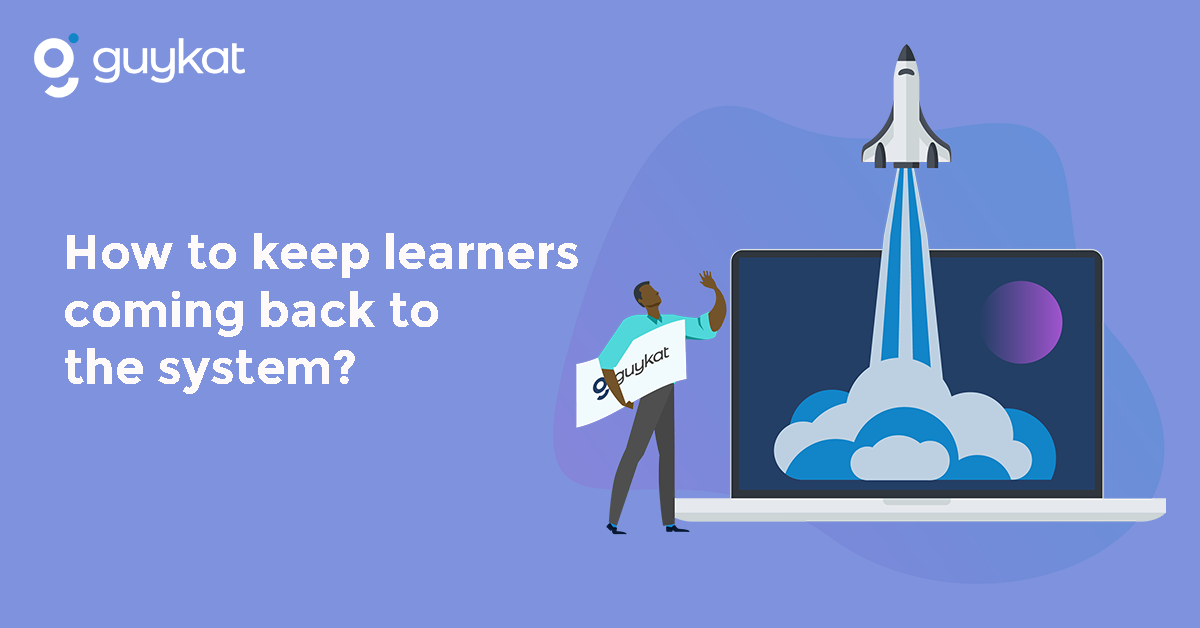‘We invested money in loads of brilliant eLearning content but people only access their compliance training. How do we encourage people to proactively engage with our whole content library?’
This is a frequently asked question by Learning & Development leaders. It’s difficult to motivate people to take charge of their own learning online. What can you do to improve and see continuous learning?
We identified three themes: Content, Platform and Communication.
Content
Tailored content
You may have a top-class user experience for your platform but if your content is poor, learner’s will sense it. Different audiences require different approaches. It is important to ask yourself ‘Who is this course for?’, ‘Who are we aiming this content at?’, ‘What are the key things I want my learner to take from this course?’. Analyse existing training and find out what works well and why. Go into as much detail as possible to understand the learners, their needs and preferences.
User generated content
Otherwise known as social learning, user generated content gives a sense of control. Nothing motivates a person more than the feel of contribution. User generated content not only allows sharing best practises and wealth of knowledge from learner’s real-life experiences. It also reduces the feeling of isolation, which is key with so many people working from home.
Platform
Organise your content effectively
Effectively organised content is one of the key factors that increase learner engagement. If you want your learners to come back to your learning system, you need to make it easy for them to access the material. Nothing can be more annoying than scrolling through pages of training and not finding what you’re actually looking for.
Related content: Organise Content to Increase Learning Engagement.
Create the best UX
At GuyKat, we’re big advocates that ‘content’ and ‘platform’ matter equally. The bridge between the two is the user experience (UX). For learners to go back to the system willingly, they need to find it comfortable to use. Less is more. Try and use attractive calls to action, clear landing pages and avoid screen clutter. That will eventually result in higher learner engagement.
Communication
Feedback is key
Your platform and content should evolve over time based on new features that have been released and your organisation (or customer) feedback.
Schedule a monthly or quarterly discussion to gather feedback from your learners and identify if there are patterns in needs and wants. Also, keep track of user results and metrics on your eLearning content, such as how long they spent taking the course, if they paused it and at what point if a specific question received a low average score.
GuyKat tip: Learners are more likely to go back to the platform if they believe it’s being frequently updated and they’re likely to find something new and of value.
Long term communication plan
Regularly and proactively reach out to your learners from your learning platform to let them know what’s new! Have you released a new piece of content? Have you rolled out a new feature that your users can benefit from? Drip-feed new/exciting content on a regular basis.
Encourage and reward
Start with listing the accomplishments you think are worth a reward. Tie goals with rewards. These don’t have to be physical rewards for completing training (though it could be). You could have ‘leaderboards’ or virtual badges where the intangible reward is kudos. In many working environments, the power of kudos shouldn’t be underestimated.
Related content: To put this insight into action, the Docebo gamification app features a Reward Marketplace, that you can read about here.
Final thoughts
In short, if you want learners coming back to your platform and actually enjoy it, don’t focus on just one thing. Analyse and create a strategic plan for your content, platform and communication. If you want continuous learning, you need to continuously improve your assets and learn how to leverage them effectively.


